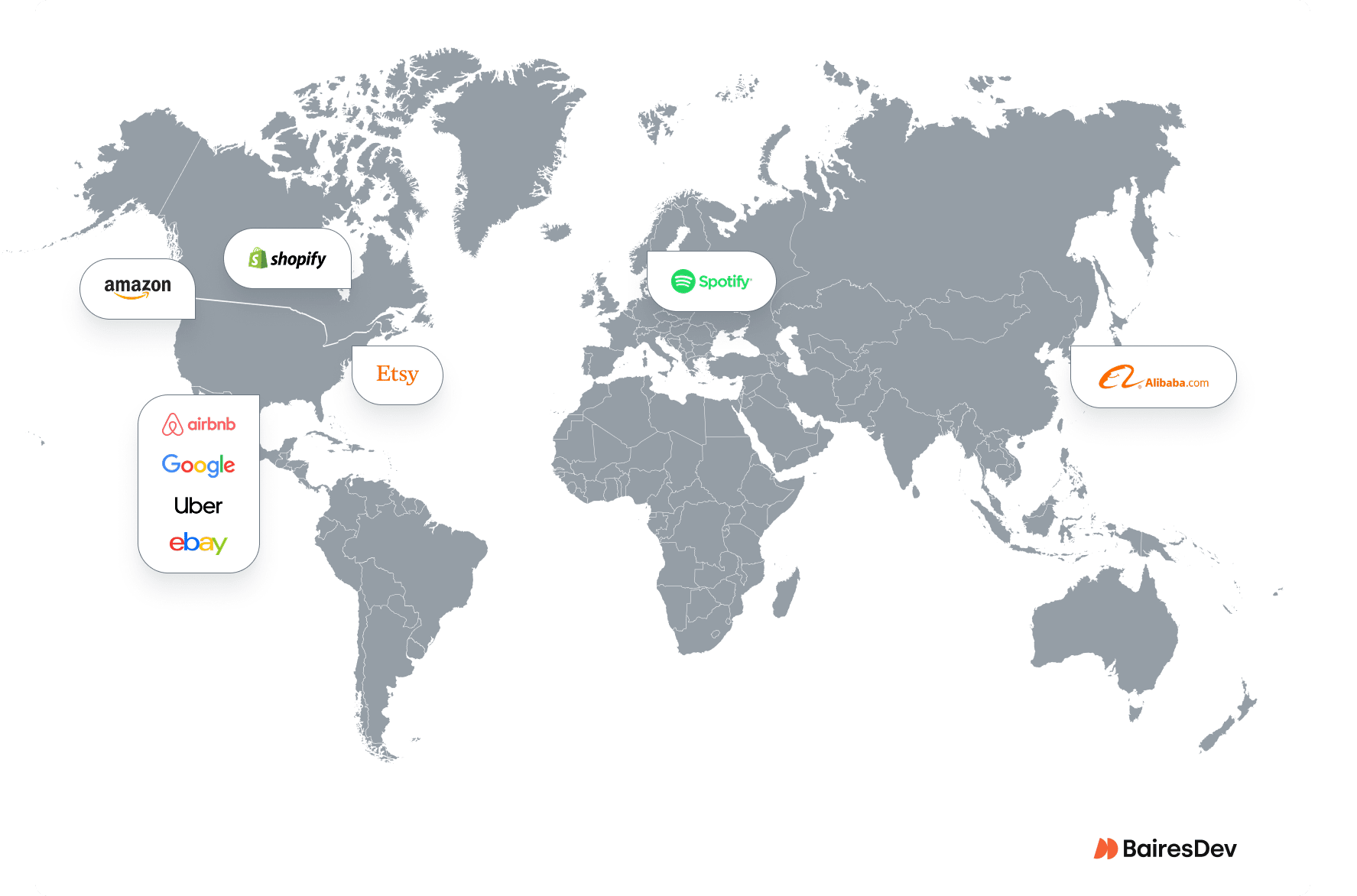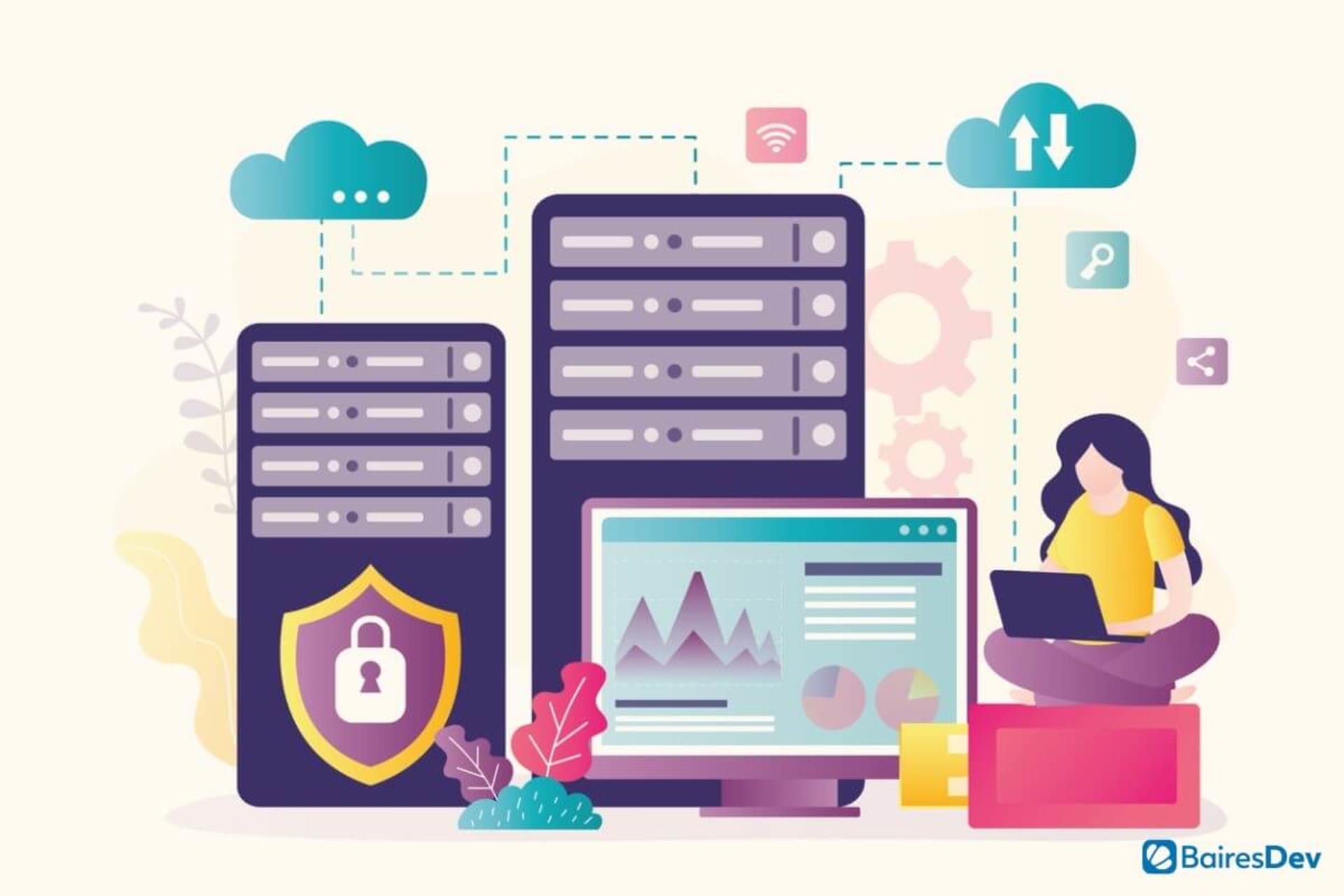Ruby on Rails sits behind some big names such as Shopify, GitHub, Airbnb, Hulu, even parts of Spotify. While RoR has been around for years, this is the résumé of a “dead” framework. Rails is still a go-to in web app development when speed matters, giving teams the right mix of flexibility, structure, and staying power.
If you’ve written it off as dead, it’s worth a second look, especially if you want to get your next app off the ground fast with a proven programming language.
Rails remains a pragmatic choice for enterprise web apps when time to market and change velocity matter. Teams ship faster because Rails favors convention over configuration, has mature libraries for common product needs, and scales well for typical business workloads.
If you need to stand up a dependable customer-facing platform or internal system quickly, Rails is often the shortest path to production without locking you into a niche stack. Another benefit or Ruby’s ubiquity is access to senior talent. Many developers have extensive Ruby experience spanning decades.
History Behind the Ruby Programming Language
Ruby was created in the mid-1990s by Yukihiro Matsumoto, a Japanese computer scientist who aimed to develop a scripting language that was both easy to learn and powerful.
Matsumoto’s vision was to create a programming language that prioritized simplicity and productivity in web development. As a true object-oriented language, everything in Ruby is an object, and it supports essential features like inheritance, polymorphism, and encapsulation.
This design philosophy promotes code reuse and simplicity. Over the years, Ruby’s popularity has grown, leading to a vibrant and active Ruby community.
Where Does Ruby on Rails Fit In?
Ruby has been a consistently popular general-purpose programming language since its release.
Rails is a Ruby MVC web framework focused on developer productivity and maintainable server-side apps. It provides routing, controllers, views, an ORM (ActiveRecord), background job hooks, and a batteries-included ecosystem.
Rails pairs well with modern front-ends via APIs or server-rendered views and fits cleanly into containerized, CI/CD-driven environments.
What Is Ruby Used For In an Enterprise Environment
While software engineers who use it may encounter certain challenges, Ruby on Rails development also provides many benefits. This combination explains why enterprises continue to rely on Rails.
| Benefit | Why it Matters |
|---|---|
| Faster time to market | Convention, generators, and mature gems cut build time for auth, CRUD, admin, and billing. Teams often see shorter lead time for changes and quicker MVPs. |
| Maintainability at scale | Opinionated structure and consistent patterns reduce variance between squads, lowering onboarding time and regression risk. |
| Stable ecosystem | Long-lived gems for authentication, authorization, background jobs, and caching reduce custom code and security surface. |
| Cost efficiency | Faster delivery and easier hiring for full-stack Rails skills can reduce cost per feature. Rails’ maturity trims “yak shaving” across infra and tooling. |
| Integration-friendly | Rails’ API mode, strong JSON tooling, and background workers make it a good layer over systems like Salesforce, SAP, and mainline cloud services. |
Tradeoffs and Challenges
The Ruby ecosystem is not without trade-offs. Enterprises evaluating it should be mindful of:
- Talent availability: Ruby programming skills are in high demand. While experienced Ruby developers are widely available, the talent pool is smaller than for Java or JavaScript, making hiring at scale harder without the right partner.
- Concurrency & scale: Ruby MRI’s GVL favors multi-process over multi-thread. Use Puma workers, Redis-backed queues (Sidekiq), and read replicas to scale.
- Performance: For CPU-bound, ultra-low-latency workloads, a compiled language may be better. For I/O-bound business apps, Rails is usually sufficient with caching, background jobs, and horizontal scale.
- Front-end complexity: Heavy client-side SPAs may push more complexity into JS/TypeScript.
- Hosting considerations: Not all providers support Rails equally, which may require more specialized infrastructure.
These challenges don’t eliminate Rails as an option. They highlight where experienced teams and proper planning matter most.
Choose a different stack if you’re building ultra-low-latency trading, heavy real-time streaming at massive scale, or compute-intensive pipelines where a compiled, highly concurrent language is a clearer fit. Rails can still serve admin, APIs, or back-office needs alongside those cores.
Where Ruby on Rails Works Best
We see Ruby on Rails deliver the strongest results in:
- Customer-facing platforms (e-commerce, online marketplaces, subscription services)
- SaaS products where rapid iteration and scale matter
- CRM and workflow applications that require customization and integration
- Community-driven platforms like GitHub or Goodreads
Industry Applications

We’ve defined six main types of projects where this programming language seems like the best choice.
Customer Relationship Management Applications (CRM)
Building a custom CRM with Ruby on Rails is smart and cost-efficient. Ruby’s object-oriented scripting makes it easier to reuse code and speed up development. Rails shines when teams change—well-known patterns and conventions ease onboarding. You can also layer in behavioral tracking or other custom tools later without breaking everything.
Software-as-a-Service for Web Applications
Ruby on Rails is one of the most popular web development frameworks for SaaS products because it runs everywhere and scales fast. Take Basecamp: it handles messaging, tasks, milestones, file sharing, and chat—all built with Rails. Rails also includes command-line tools needed for deployment and ops. ActiveRecord simplifies data access, and reporting is commonly handled via warehouses/BI or API exports. Plus, you can try out modules quickly to see what fits your business.
Open-Source Repository
GitHub, one of the most popular dev hubs in the world, runs on Rails—built around user contributions and a complex database of interactions.
eCommerce
Rails powers heavy-traffic ecommerce platforms. Etsy—built on Rails—connects millions of sellers with buyers, complete with listings, checkout, reviews, and search. Amazon-style features like carts, filters, and recommendations are straightforward to build. Social platforms like Goodreads (reviews, lists, reading goals) also rely on Rails. Hulu and Twitter (initially built in Rails before rewriting parts later) prove the framework can handle streaming and high-volume messaging.
Data Processing and Analysis
Ruby’s syntax is designed to be easy to read and write. It’s also a great tool for web scraping and crawling, with libraries that simplify the extraction of data from web pages.
Online Marketplace
Airbnb started on Rails—and for good reason. Ruby features enabled developers to write less code, launch faster, and pivot quickly. Today, hundreds of millions use the site to list, book, and manage stays. Rails underpins the user flows, database logic, and admin tools that keep it humming.
How We Support Your Rails Strategy
So is Rails perfect? Not at all. But if your team values quick iterations over raw speed, it’s often the smarter choice.
With 4,000+ full-time engineers across LATAM, BairesDev builds and scales Rails teams that integrate directly into enterprise businesses. Our engineers average 10+ years of experience and bring a track record of supporting high-growth platforms. That means you get:
- Teams ready to start in weeks
- Engineers aligned with U.S. time zones for real-time collaboration
- Expertise in compliance-heavy industries where reliability and governance matter
- We can plug in experienced Rails engineers when you need them — and step back when you don’t.
If you need to accelerate delivery, extend your team’s capacity, or stabilize an existing Rails platform, we provide a team of Ruby developers to make it happen. Contact us to learn more.






